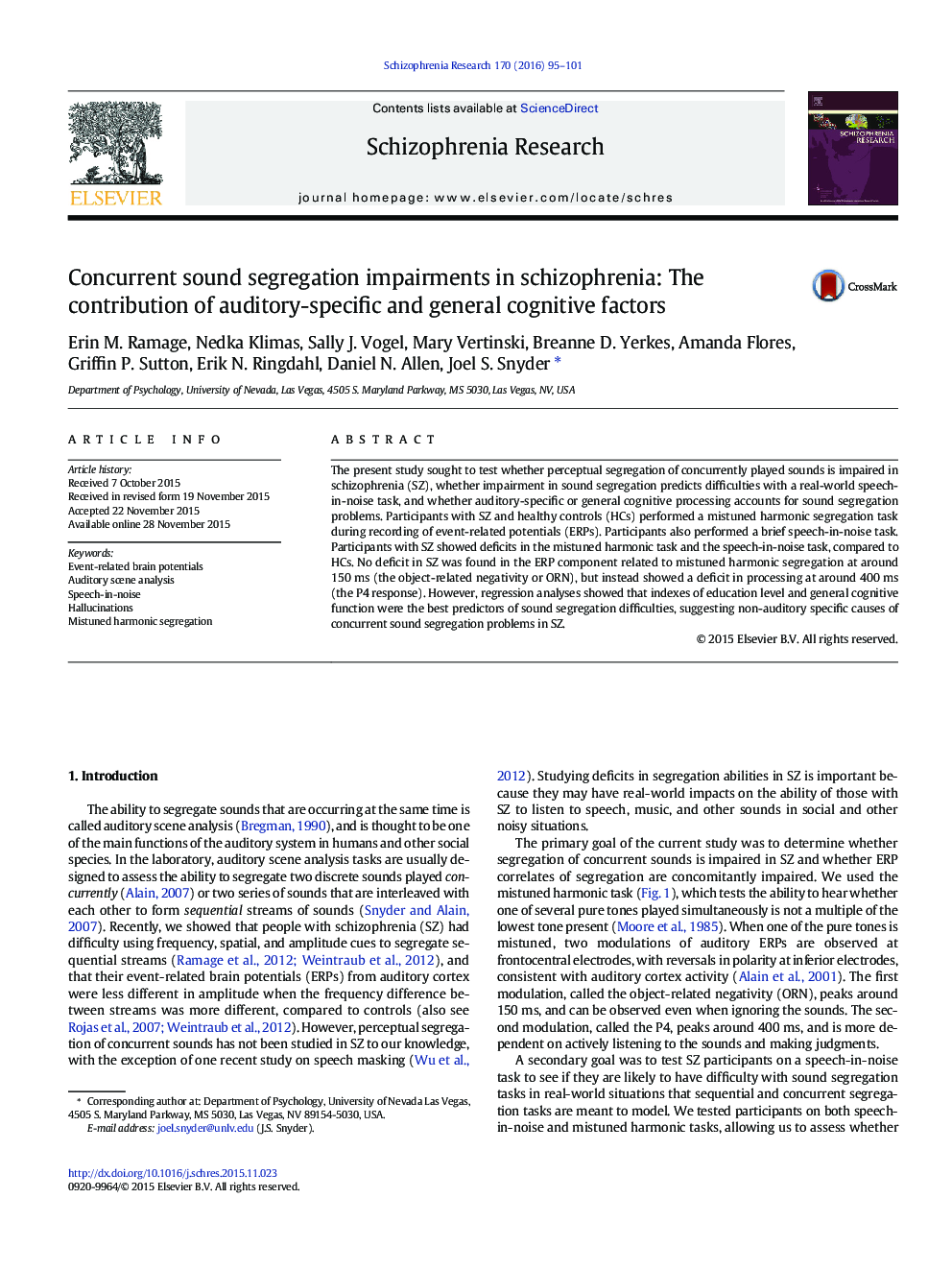| Article ID | Journal | Published Year | Pages | File Type |
|---|---|---|---|---|
| 10307901 | Schizophrenia Research | 2016 | 7 Pages |
Abstract
The present study sought to test whether perceptual segregation of concurrently played sounds is impaired in schizophrenia (SZ), whether impairment in sound segregation predicts difficulties with a real-world speech-in-noise task, and whether auditory-specific or general cognitive processing accounts for sound segregation problems. Participants with SZ and healthy controls (HCs) performed a mistuned harmonic segregation task during recording of event-related potentials (ERPs). Participants also performed a brief speech-in-noise task. Participants with SZ showed deficits in the mistuned harmonic task and the speech-in-noise task, compared to HCs. No deficit in SZ was found in the ERP component related to mistuned harmonic segregation at around 150Â ms (the object-related negativity or ORN), but instead showed a deficit in processing at around 400Â ms (the P4 response). However, regression analyses showed that indexes of education level and general cognitive function were the best predictors of sound segregation difficulties, suggesting non-auditory specific causes of concurrent sound segregation problems in SZ.
Related Topics
Life Sciences
Neuroscience
Behavioral Neuroscience
Authors
Erin M. Ramage, Nedka Klimas, Sally J. Vogel, Mary Vertinski, Breanne D. Yerkes, Amanda Flores, Griffin P. Sutton, Erik N. Ringdahl, Daniel N. Allen, Joel S. Snyder,
